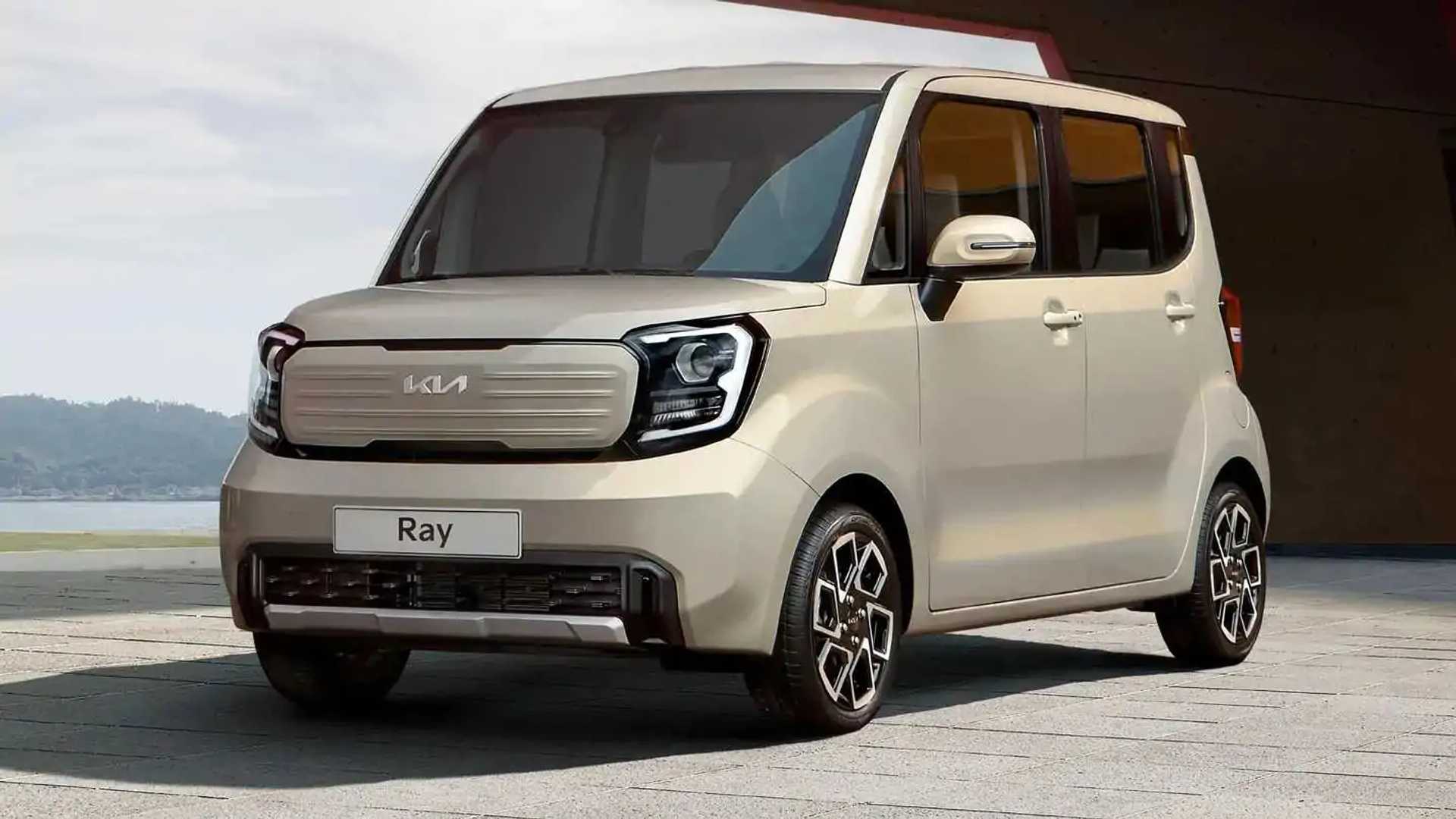
The Kia Ray EV was the brand's first production electric vehicle when it launched in 2011 on the Korean market. Remarkably, it's still on sale today, and you would think Kia is finally ready to switch to a second-generation model.
Well, you should think again because the automaker has given the Korea-only electric city car its second facelift after the one received in 2017. This time, the changes are more significant, bringing the tiny Ray EV—its 3,595-mm (141.5-in) long, 1,595-mm (62.8-in) wide and 1,700-mm (66.9-in) high—in line with the brand's newer products.
At the front, the 2023 Kia Ray EV adopts a redesigned front "grille" sporting the updated corporate badge. The closed-off grille is flanked by new LED headlights with that adopt a vertical layout instead of the predecessor model’s horizontal units. Down below, the bumper has a brand-new design as well and no longer integrates the fog lights; it also adopts a skid plate-like element at the bottom.
Seen from the side, the Kia Ray EV looks almost identical to the outgoing model bar the new alloy wheel design.
Gallery: 2023 Kia Ray



More changes can be seen at the rear, where the mini EV boasts new LED taillights connected to glossy black trim pieces extending across the tailgate. The rear bumper has been redesigned as well to look more SUV-like and the tailgate handle is now hidden.
Moving on to the interior, Kia hasn't made too many changes besides adding a 4.2-inch digital instrument cluster, enlarging the center infotainment display at the expense of physical buttons and slapping its new logo on the steering wheel. The press release also mentions the light gray fabric applied to the seats and door panels. The changes are welcome, but the dashboard design is clearly getting on a bit.
As Hyundai Motor Group's brands have accustomed us lately, the 2023 Kia Ray EV is shown in only a few images without any technical specifications. The full reveal will follow in the coming weeks, when we'll hopefully learn something about the EV powertrain. Speaking of powertrain, the Kia Ray also offers a 1.0-liter three-cylinder gas engine in Korea.
In its current form, the Kia Ray EV is powered by a front-mounted electric motor producing 50 kilowatts (67 horsepower), which draws energy from a 16.4-kWh lithium-ion battery enabling 86 miles (138 km) of NEDC range. The Korean market launch for the 2023 Kia Ray EV will take place in September, when additional specifications and pricing will be announced.







